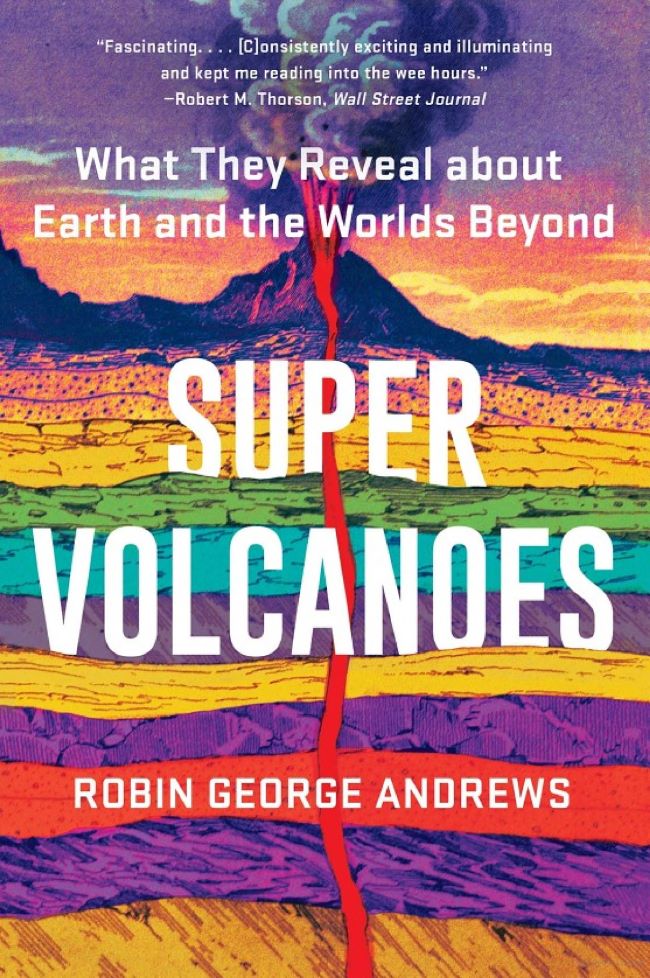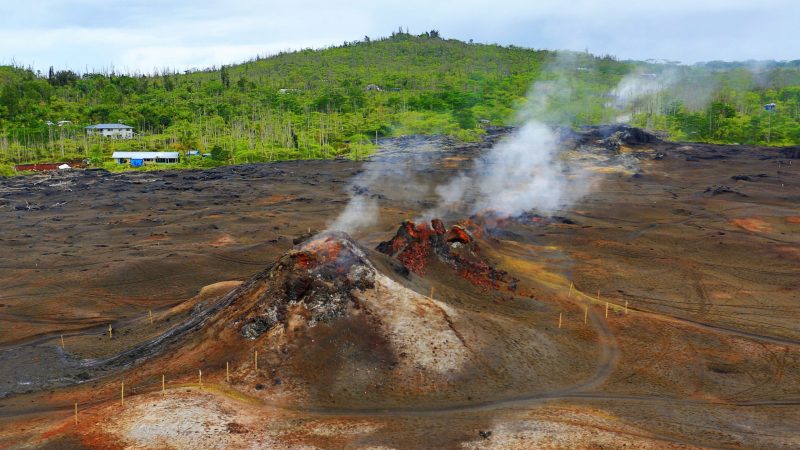
Media we love: Super Volcanoes
Kelly Kizer Whitt recommends “Super Volcanoes”
Okay, the book Super Volcanoes by Robin George Andrews isn’t about supervolcanoes. It’s a journey across Earth and the solar system to volcanoes of all kinds. That includes, yes, a real supervolcano, like the one beneath Yellowstone … to underwater volcanoes … to ice volcanos on other planets and moons in our solar system. If you like explosive geology, you won’t be disappointed.
Robin George Andrews is a science journalist with a Ph.D. in volcanology, so he writes with authority. He also interviews the researchers whose lives revolve around studying the wide assortment of volcanoes in our solar system. The book begins at Kilauea, a Hawaiian volcano that recently erupted again. Andrews describes the 2018 eruption at Kilauea, where a man dodged a bomb of molten rock while standing on his balcony. Andrews continues:
Near some of the fissures in Leilani Estates, people began seeing blue flames trip the light fantastic, whirling and twirling in the night. One journalist covering the eruption, Maddie Stone, described the deep blue fires with unassailable magnificence for Gizmodo, writing that the scene was reminiscent of ‘bioluminescent waves lapping against the shores of hell.’
Soon after reading this chapter, I was looking through EarthSky’s Community Photos page and discovered a recent photo of Leilani Estates from Paul Peh, which was a nice comparison to see how “hell” was looking today.

Other earthly volcanoes
Andrews has a chapter on Yellowstone, a true supervolcano, though its last supereruption was 640,000 years ago. He describes a worst-case scenario for a future supereruption at Yellowstone and compares it to the supereruption at Toba in Indonesia, which was a mere 74,000 years ago.
Andrews also describes a volcano in East Africa that erupts with black lava, and then moves to a chapter set underwater, where:
… there’s more volcanic activity in the oceans than on land.
Andrews explains how finding life near undersea vents has changed the way we look for life in the universe:
If life doesn’t need sunlight to survive and can live in a volcanic twilight at the bottom of the oceans, then perhaps planets that appear to be deadly to animals and plants may still be perfect places for microbes.
And then we’re off on a tour of our solar system’s volcanoes.
Volcanoes in the solar system
The first stop in the solar system is the moon, where there’s a conundrum. In 2014, a team of scientists carefully used crater counting to determine the ages of irregular mare patches:
They found that they were no more than 100 million years old, meaning that dinosaurs should have been able to see eruptions on the moon.
However, Andrews explains:
… how could the moon’s viscera have remained so hot for so long that a Stegosaurus could have seen lava fountains paint the night sky?
He continues to the mysteries of volcanism on Mars, Venus and, of course, Jupiter’s moon Io. But he also mentions some spots you may not be familiar with as having volcanism, albeit cryovolcanism (icy geysers), including Enceladus, Ceres and Pluto.
So if you’re looking for a book about supervolcanoes and much, much more, “Super Volcanoes” has you covered.
Bottom line: “Super Volcanoes” by Robin George Andrews is a great read about the superiority of all kinds of volcanoes, from Yellowstone’s supervolcano to icy geysers in the outer solar system.
The post Media we love: Super Volcanoes first appeared on EarthSky.
0 Commentaires